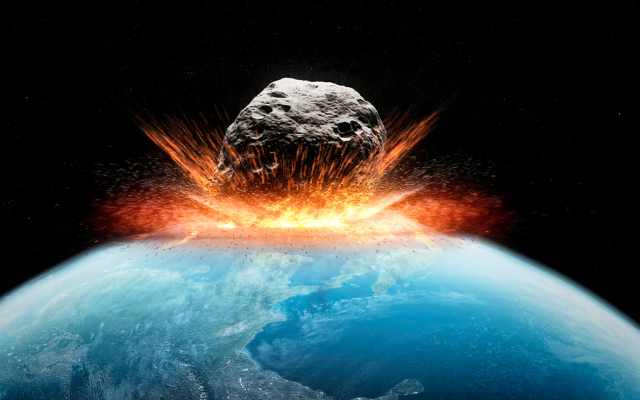Asteroid 2019 PDC: Potential Impact and Mitigation Strategies for a 2046 Earth Collision

Asteroid 2019 PDC: In recent years, there has been growing concern about the possibility of an asteroid impact on Earth. While the likelihood of such an event is relatively low, the potential consequences are severe. In early 2023, astronomers detected an asteroid that could hit Earth in 2046. In this article, we will explore the details of this asteroid, the potential impact it could have, and what measures are being taken to mitigate the risk.
What is the Asteroid that Could Hit Earth in 2046?
The asteroid in question is known as 2019 PDC. It was first detected by astronomers in August 2019, and it has a diameter of approximately 400 meters. According to NASA, 2019 PDC has a 1 in 2,700 chance of impacting Earth on October 20, 2046. While these odds may seem small, they are significant enough to warrant attention from the scientific community.
What is the Potential Impact of the Asteroid?
If 2019 PDC were to impact Earth, the consequences would be significant. The asteroid is estimated to be traveling at a speed of 65,000 kilometers per hour, which is more than 10 times the speed of a bullet. The impact would release energy equivalent to approximately 50 megatons of TNT, which is more than 3,000 times the energy of the atomic bomb that was dropped on Hiroshima.
The impact would cause widespread devastation, with the potential to wipe out entire cities and cause significant loss of life. The effects of the impact would also be felt on a global scale, with the potential for significant changes in climate and other environmental factors.
What Measures are Being Taken to Mitigate the Risk?
There are several measures being taken to mitigate the risk of the asteroid impacting Earth. NASA is currently monitoring the asteroid’s trajectory and is working to refine its estimates of the likelihood of impact. If the odds of impact increase, NASA may consider taking more drastic measures to prevent the impact.
One potential method for preventing the impact of an asteroid is to deflect its trajectory. This could be done using various methods, such as kinetic impactors or gravity tractors. A kinetic impactor would involve launching a spacecraft into the path of the asteroid, which would then collide with the asteroid and alter its trajectory. A gravity tractor would involve using the gravitational pull of a spacecraft to slowly alter the asteroid’s trajectory over time.
FAQ
Q: What is the likelihood of the asteroid impacting Earth?
A: According to NASA, 2019 PDC has a 1 in 2,700 chance of impacting Earth on October 20, 2046.
Q: What is the size of the asteroid?
A: The asteroid has a diameter of approximately 400 meters.
Q: What would be the consequences of the impact?
A: The impact would cause widespread devastation, with the potential to wipe out entire cities and cause significant loss of life. The effects of the impact would also be felt on a global scale, with the potential for significant changes in climate and other environmental factors.
Q: What measures are being taken to mitigate the risk?
A: NASA is currently monitoring the asteroid’s trajectory and is working to refine its estimates of the likelihood of impact. If the odds of impact increase, NASA may consider taking more drastic measures to prevent the impact, such as deflecting the asteroid’s trajectory using kinetic impactors or gravity tractors.
Q: Has an asteroid ever impacted Earth before?
A: Yes, there have been several asteroid impacts on Earth throughout its history. One of the most well-known impacts was the Chicxulub impact, which occurred approximately 66 million years ago and is believed to have contributed to the extinction of the dinosaurs.
- Asteroid shares Earth’s orbit discovered- Could it help future space missions?
- Geo Magnetic Storms
- WhatsApp group chats are getting bigger, you can soon add 1024 users
Conclusion
The discovery of the asteroid 2019 PDC has brought attention to the importance of monitoring near-Earth objects and the potential risks they pose to our planet. While the likelihood of the asteroid impacting Earth is relatively low, the potential consequences are severe. It is crucial that measures are taken to mitigate the risk and prevent such an impact from occurring.
NASA is monitoring the asteroid’s trajectory and exploring potential methods for deflecting its trajectory, should the odds of impact increase. As technology advances and our understanding of these celestial objects grows, it is important to continue investing in research and development to protect our planet from potential catastrophic events.






